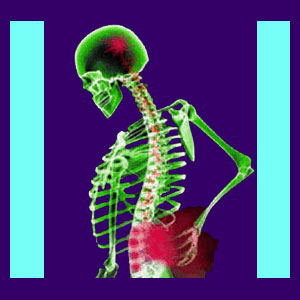
Cymbalta for back pain, also known generically as duloxetine for back pain, is one of the newer uses for this popular antidepressant medication. Although not originally designed to treat pain, this pharmaceutical product has become a physician favorite and is now an important tool in the professional pain management arsenal.
Cymbalta is heavily manufactured and prescribed worldwide for a diversity of problematic conditions. Common brand names also include Dulane, Xeristar, Duzela, Ariclaim and Yentreve, as well as many generic forms, since patent protection has expired on the original Cymbalta formula.
Cymbalta is a product close to my own heart, since it has been repeatedly recommended to me for personal consumption by a wide range of trusted caregivers. However, I never accepted the advice, since I do not see proof of efficacy in treating pain in this product, nor am I willing to accept the tremendous risks of using the drug, particularly over a long timeline.
This treatise examines the current medical preoccupation with adding Cymbalta to pain management offerings for chronic back pain patients, regardless of their diagnosis.
Cymbalta for Back Pain Fact Sheet
Duloxetine is classified as an SSNRI (selective serotonin and norepinephrine reuptake inhibitor). The prescription-only drug is commonly available in coated capsules of 20mg, 30mg and 60 mg and may be prescribed in doses as high as 120 mg per day.
Cymbalta is widely used to treat a range of seemingly unrelated health issues, including its primary target condition, depression. Cymbalta is also prescribed for the treatment of anxiety disorder, diabetic neuropathy, FMS, stress urinary incontinence and our subject, chronic back pain.
Cymbalta has been widely criticized and has just passed approval processes by narrow margins, as well as failed some attempts at widening its accepted applications, being denied by such regulatory agencies as the FDA for some proposed uses.
Cymbalta is known to be a very costly drug and does not fair favorably when compared to the efficacy of other drugs when used for its primary purpose of anti-depression treatment. Many pharmaceutical experts agree that this is what caused the manufacturers to push hard to find alternative uses in order to reap the most financial reward from a product that might otherwise have been considered a non-contender in the SSRI and SSRNI category of medications.
Cymbalta for Pain Truths
The exact mechanism by which duloxetine works to relieve pain is not exactly clear in many instances. Most physicians speculate that the benefit comes from the drugs ability to prevent sodium ions from successfully crossing into cells via sodium channels.
Results for most analgesic-related applications of Cymbalta are favorable compared to placebo, but not nearly as favorable as more traditional pain management drugs that act through better understood and proven mechanisms.
Cymbalta carries some very significant risk factors, including the potential to cause damage to the liver or kidneys, the risk of suicide, the risk of dramatic emotional and behavior modifications, the risk of severe gastrointestinal symptoms, the risk of dizziness, the risk of addiction, the risk of suffering terrible withdrawal symptoms upon discontinuance, the risk of increased bleeding, the risk of skin disorders and the risk of effects on sexual drive and performance, among many others that are less commonly reported.
Cymbalta also interacts with alcohol and many other pharmaceutical products, some in potentially lethal ways. This is why it is crucial to report all drug and alcohol use to the prescribing physician ahead of accepting this medication as part of a back pain management program.
Cymbalta for Back Pain Editorial
Duloxetine is one of the many drugs where the manufacturing companies have heavily marketed to physicians directly and offered many incentives and perks for doctors who regularly prescribe the product. While this is common in the medical sector, the degree to which this direct doctor marketing was used with duloxetine seems directly responsible for its popularity, rather than the efficacy of the product itself. This is a sad comment on the business side of medicine.
In order to get a realistic view of the effectiveness of Cymbalta for treating back pain, all one truly has to do is search the online database of patient forums, wherein literally millions of people comment on the product efficacy and health consequences. I find this far more truthful and accurate than any corporate-sponsored research results could ever be.
As an aside, having read these forums for years, and having received countless direct correspondences on the subject from our readers, I have yet to see many people extol the benefits of duloxetine for back pain. I have witnessed many patients complain about the terrible side effects and particularly, the dramatic withdrawal toll when they were taken off the drug.
Unless proven otherwise, it just does not seem that duloxetine is a good choice as an analgesic for chronic back pain, especially compared to other less harmful pharmaceutical and non-pharmaceutical options. The drug will never provide a cure, but will certainly create collateral damage to many of the mindbody systems that are crucial for life.
Additionally, as an antidepressant, the drug may actually help preserve the mechanism of some mindbody pain syndromes, as these substances assist in the emotional repressive process and will certainly counteract any therapy used to reach deeply buried psychological traumas that are contributing to the current symptomology.





